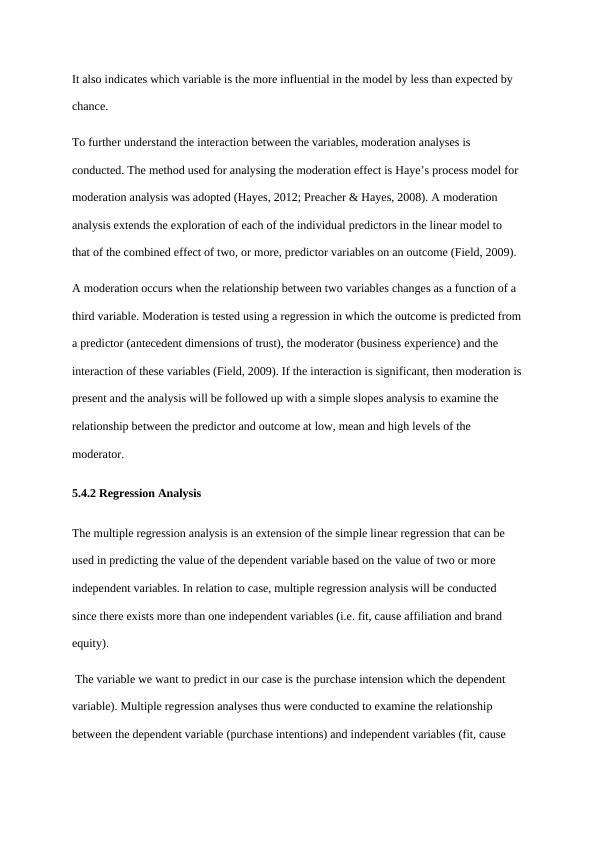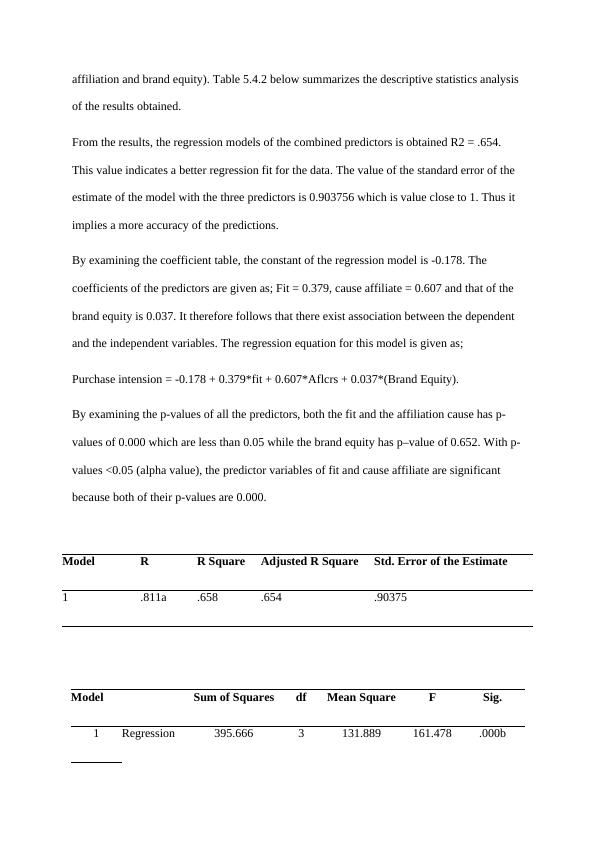Hypothesis Testing in Regression Analysis
Analyzing the concept of strategic philanthropy and cause related marketing in companies, and conducting factor analysis and hypotheses testing in SPSS.
8 Pages1747 Words189 Views
Added on 2023-04-21
About This Document
This article discusses hypothesis testing in regression analysis, focusing on the importance of interpreting results accurately and preventing multicollinearity. It also explores the values to consider in multiple regression analysis and the concept of moderation analysis. The article provides insights into regression analysis and its role in predicting the value of the dependent variable based on multiple independent variables.
Hypothesis Testing in Regression Analysis
Analyzing the concept of strategic philanthropy and cause related marketing in companies, and conducting factor analysis and hypotheses testing in SPSS.
Added on 2023-04-21
ShareRelated Documents
End of preview
Want to access all the pages? Upload your documents or become a member.
Simple & Multiple Linear Regression
|6
|807
|16
Case Study: Multiple Linear Regression for Insurance Rates
|7
|769
|83
Multiple Regression - Desklib
|5
|656
|347
Regression Report
|9
|1248
|39
Statistics 101: Simple Linear Regression Concept 2022
|2
|572
|35
Assignment On Post Secondary Degree
|4
|1075
|18



